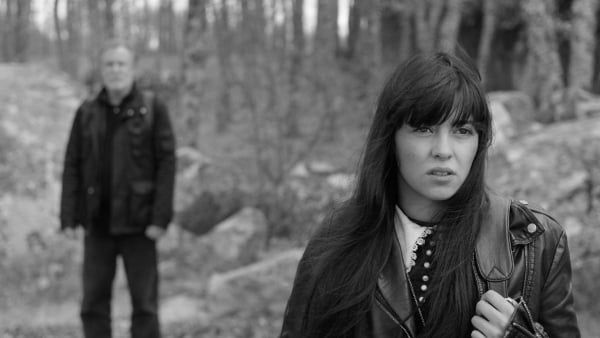Eye For Film >> Movies >> The Forest Of The Lost Souls (2017) Film Review
The Forest Of The Lost Souls
Reviewed by: John-Anthony Disotto

A Floresta das Almas Perdidas (The Forest Of The Lost Souls) is the feature-length debut from Portuguese director José Pedro Lopes. Part coming-of-age part horror, the film tells the story of two strangers as they meet within a remote forest, Portugal’s most popular place for suicide.
Ricardo (Jorge Mota), a grief-stricken father unable to deal with the suicide of his eldest daughter finds himself following in her footsteps as he arrives at the forest. There, he encounters Carolina (Daniela Love), a rebellious teenager with an obsession for suicide. Ricardo sees his daughter, Irene (Lilia Lopes), in the young girl as they form an unlikely friendship that quickly spirals out of control. The two share back and forth comedic exchanges as Carolina mocks Ricardo for his lack of preparation because he’s brought a knife to do the deed but left his pen and paper at home. Carolina decides to assist Ricardo in a manner which reveals her skewed perspective.

This instigates a change of pace that stops The Forest Of The Lost Souls from being an emotional analysis of suicide and the struggles of human coping mechanisms, instead heading showing the effects of suicide on the families who are left behind. Carolina’s character never develops to the point where anything truly makes sense. She’s a psychotic and selfish individual with no real reason for her actions bar a few pop-culture references that feed an unhealthy obsession (sitting in the forest she tells Ricardo of her love for Nick Hornby’s A Long Way Down).
“Sadness will last forever”, the famous last words of painter Vincent Van Gogh, reverberate throughout The Forest Of The Lost Souls as Lopes attempts to push across the severity and emotional destruction of suicide. The use of a monochrome palette passes an otherwise bright Portuguese summer through a bleak filter, a decision that lends the story an interesting dynamic, eradicating the distractions of the natural environment, instead focusing on the horror that ensues.
The film is built on incredibly dark themes. That being said, the decision to add humour throughout Ricardo and Carolina’s initial encounter and then drastically escalate the horror without any real explanation hinders the terrifying effectiveness of the subject matter on which the story is built. Instead of engaging the viewer through emotion, the film becomes a predictable horror that barely scrapes the surface with the theme of suicide. Lopes’ attempt to force a traditional horror arc on the story reduces the horrifying reality of suicidal tendencies, a theme that needs no exaggeration.
Reviewed on: 03 Aug 2018
















